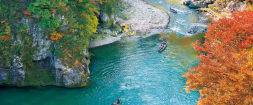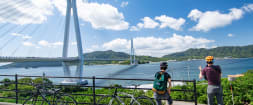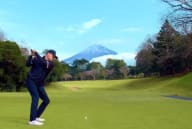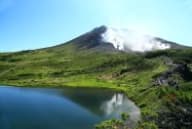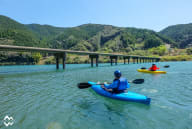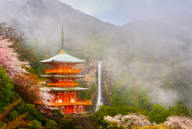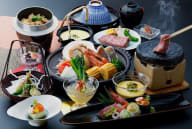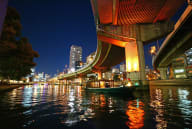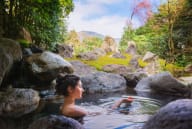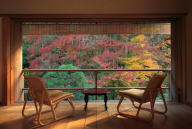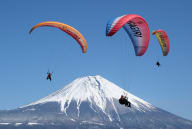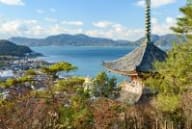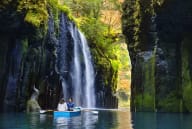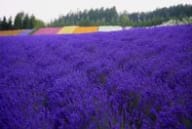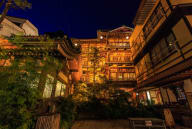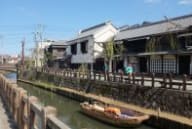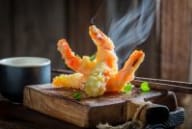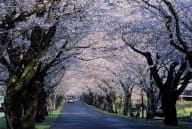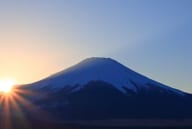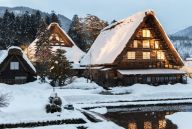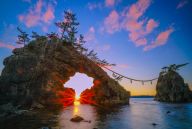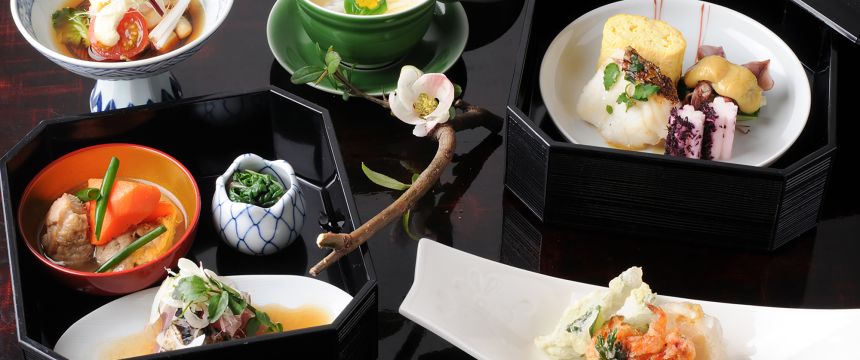Oma-cho, Aomori Prefecture – Tohoku
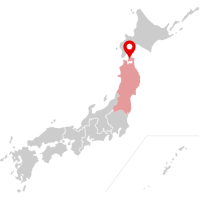
Journey to the Shimokita Peninsula, located in the northernmost part of Japan’s main island of Honshu. At the tip of the peninsula, you’ll find the quaint fishing town of Oma, well known in Japan for the Pacific bluefin tuna that the local fishermen haul out of the rough waters of the Tsugaru Strait.
The tuna, branded Oma Tuna and called “black diamonds” because of their tremendous value, are considered Japan’s finest—fetching incredible prices at auction and appearing on menus of the country’s top restaurants. Seafood connoisseurs would be wise to savor the delicacy that is Oma Tuna sashimi at least once during their Japan trip. True aficionados of the Oma Tuna, however, should head to its fishing grounds where they can witness firsthand the fight to catch the fish and sail out on the sea that nurtures its growth.
The Perfect Place for Tuna
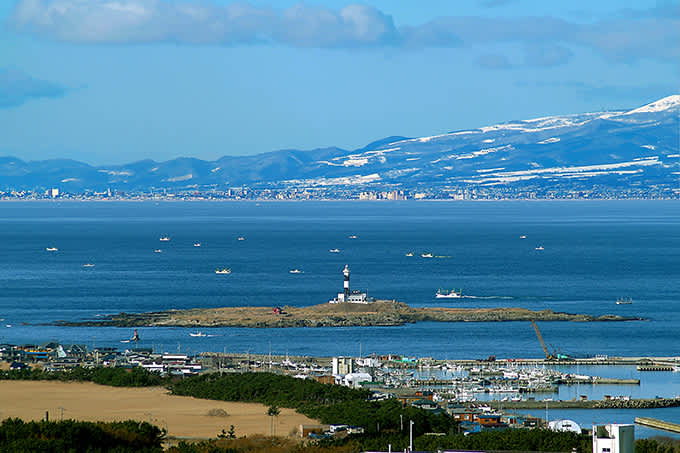
In this rugged, windswept region, the power of nature is on display. Along the coast, rock formations carved by rough waves tower above the sea. And in the Tsugaru Strait, connecting the Pacific Ocean to the Sea of Japan, three currents converge, producing choppy torrents.

The three currents—the Kuroshio, Tsushima, and Kuril—create an environment where plankton thrives, providing a rich feeding area for squid, sardines, and other fish that Pacific bluefin tuna feed on. With so much to eat, tuna are plentiful—but not all are worthy of the Oma Tuna title.
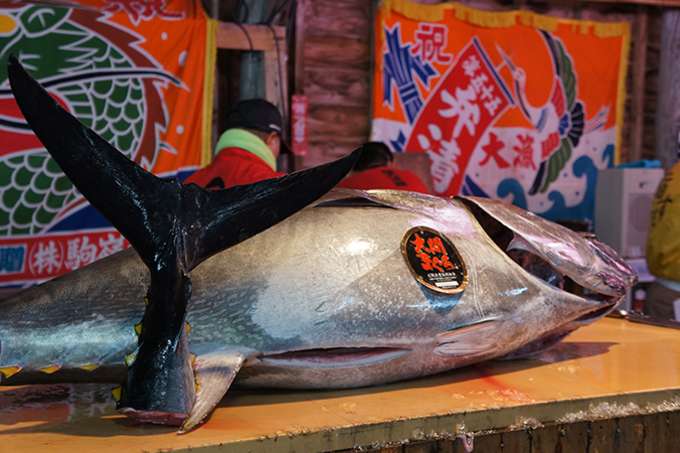
In a League of Their Own

In 2007, the Oma Fisheries Cooperative established Oma Tuna as a regional collective trademark. Only a tuna that is shipped from Oma weighing at least 30 kilograms can receive a seal designating it as Oma Tuna. This weight requirement doesn’t usually pose a problem, since the average weight of Oma Tuna is 100 kilograms, with plenty of the fish coming in at many times that weight. In fact, the largest recorded tuna, caught in 1994, weighed a whopping 440 kilograms.
Even more impressive is that these enormous tunas are caught using the pole-and-line fishing method or the longline method, both of which pit fisherman against fish in a fierce battle. The average speed that tuna swims is 40 kilometers per hour, but when agitated, they can swim as fast as 130 kilometers per hour. It’s a testament to the incredible skill of local fishermen that they can land such enormous, fast-moving fish.
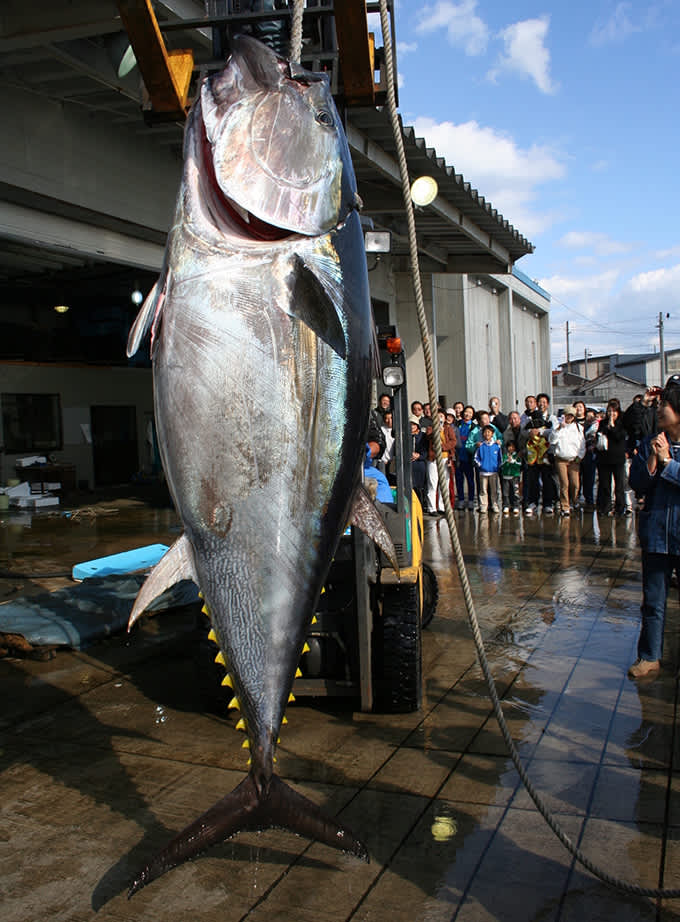
These fishing methods, used for over one hundred years, require intense effort by the fishermen, but their use enables the fish to be caught and brought on board without injury. These days, electric shock is used to stun the fish before they are hauled on deck, decreasing the risk of injury to the fish and their escape. From start to finish, it’s demanding and exciting work, which you can observe up close.
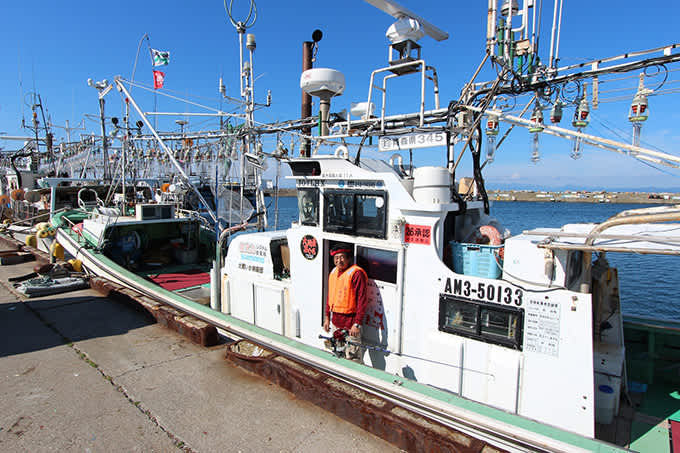
Get in on the Action

Oma Tuna season runs from August to January, with the largest fish caught in the colder months of fall and winter when fat stores are at their highest. However, you should try to visit Oma between August and mid-October to experience the thrill and excitement of chasing tuna. During this time, you’ll have a chance to join a veteran fisherman out on the water as part of a Y Project pole-fishing tour.

Marvel at the power of the ocean currents as you travel five kilometers to the open sea, where your boat will be one of many aiming to bring in a hefty tuna. While you won’t get a chance to run the line yourself, you’re bound to find more than enough excitement just watching the fishermen work, all the while providing commentary.
In the middle of the action, with the wind in your hair and sea spray on your face, you will be captivated by the energy and enthusiasm of fishermen primed to reel in a big one. Of course, there are no guarantees when it comes to fishing, but there’s a good chance that during your two hours on the water, you will get to see a “black diamond” reeled in—if not by a pro on your own boat, then by a fisherman on a nearby vessel.
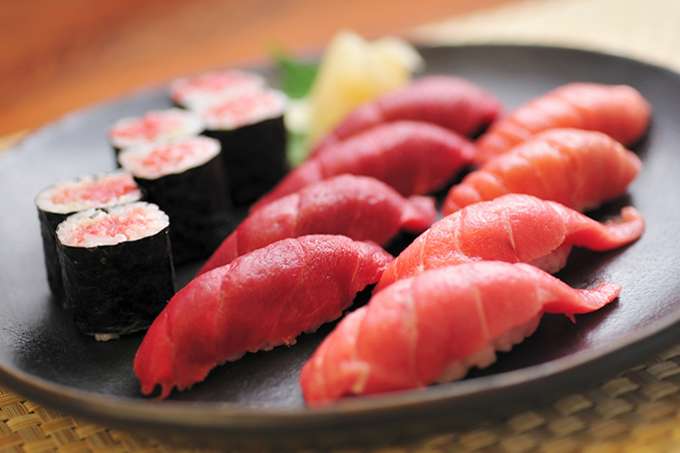
If you lack dependable sea legs or want to see what else Oma has to offer, sign up for a walking tour to discover the town’s many charms. Guided by locals, explore seaside roads, sample local specialties, and visit the town’s shrine, where you’ll be able to enter its hall of worship—a rare experience.

Tours that range from one and a half to two hours are available and can be upgraded (for additional cost) to include a meal of Oma Tuna. Discover all that Oma has to offer with the help of friendly locals, and get an idea of what life is like in this remote fishing town.
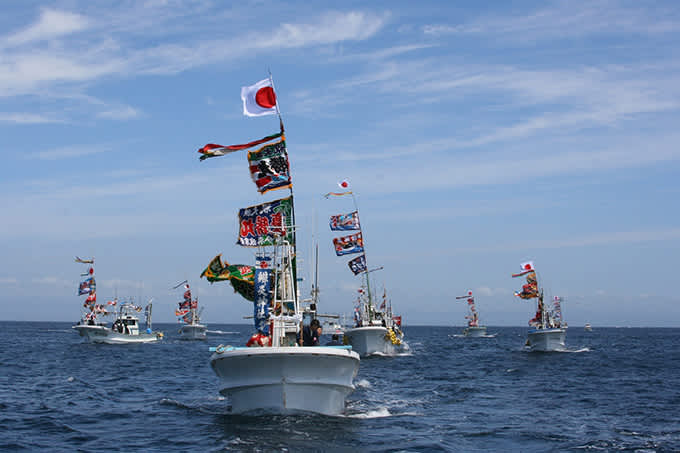
From Unknown Village to Celebrated Star of the Tuna World
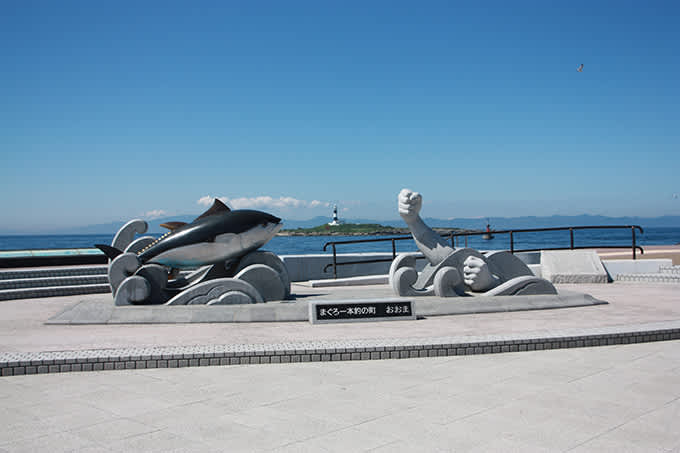
Today, Oma is renowned for its tuna and is a popular destination for those with a desire to experience tuna fishing firsthand. That hasn’t always been the case, though. It wasn’t until the year 2000, when public broadcaster NHK televised a serial drama with a connection to Oma, that the town gained widespread recognition and its tuna began to fetch astonishing prices at auction, a phenomenon that continues today. Indeed, in 2019, a single Oma Tuna went for 333.6 million yen at auction.

Capitalizing on its sudden fame, the town organized itself as a top tuna-lover’s destination, offering tuna-cutting demonstrations and the chance to eat freshly cut tuna right next to the sea where it was caught. September and October see tourists gather in town for the Sunday Tuna Day events, with demonstrations twice a day and tuna set lunches at prices you won’t see outside of Oma.
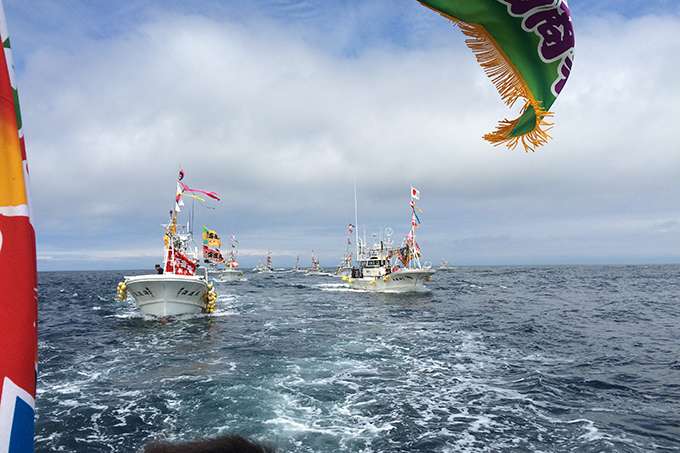
Though most visitors want to go to Oma for the tuna season, July offers its own excitement with the town’s Tairyo Kigan Sai (Great Catch Prayer Festival), a festival to pray for a bountiful catch in the coming year, and its Tenpisama Gyoretsu (Tenpi Procession), a march through town to honor Tenpi, a goddess of the sea.

In the Tohoku region of Japan, Oma is the only area where Tenpi is worshipped, so if your trip coincides with the festival and the procession, usually held the third Monday of July (Japan’s Marine Day), consider yourself lucky to be able to see such a rare event.
Discover the remote northern coast of Honshu, its stunning vistas and its quaint villages. In Oma, realize the thrill of the chase out on the open ocean and the charms of the town itself. Whether you opt to hunt tuna or tour the town, you’re guaranteed a unique experience. Stray from the established tourist paths, and make your trip spectacular.
Contact Information
Y Projec
11-7 Hebiuramichi, Oma, Shimokita District, Aomori Prefecture 039-4601
How to Get There
Oma is situated on the northernmost tip of the Shimokita Peninsula in Aomori Prefecture. The easiest way to access the town is by way of Hakodate, a city located across the Tsugaru Strait in Hokkaido Prefecture. From Hakodate Airport, travel by bus to the Hakodate Terminal of the Tsugaru Kaikyo Ferry. From there, cross the Tsugaru Strait by ferry to reach Oma. The trip takes up to two hour and a half hours. A similar journey from Shin-Hakodate-Hokuto Station (JR Hokkaido Shinkansen) to the Hakodate Terminal of the Tsugaru Kaikyo Ferry and on to Oma by ferry takes approximately the same amount of time.
Public transportation is limited on the Shimokita Peninsula, so if you wish to explore the area freely, renting a car is your best option. In this case, fly into Misawa Airport, served by direct flights from Tokyo’s Haneda Airport and Osaka International Airport, and drive from there. The journey takes about two and a half hours.
Recommended Itineraries
There is much to see on the Shimokita Peninsula. Begin your exploration of the area at Cape Oma, the peninsula’s northern tip. Snap a photo with the town’s tuna monument, admire the view across the Tsugaru Strait, and pick up an Oma original Certificate of Arrival to the Northernmost Point of Honshu from the tourist-information office. Hungry for more incredible views of the water? Make your way to the Nishifukitsukeyama Observatory, from where you can admire Oma, the Tsugaru Strait, and Hakodate on the Hokkaido coast. Those with a car will want to explore the coast westward along National Road 338 to Hotokegaura rock formations, a National Natural Monument, before heading inland to the volcanic landscape of Mount Osore, one of Japan’s three most sacred places and home to the temple Osorezan.
Related Links
Aomori Sightseeing Guide, Shimokita Penninsula (English)
Oma Official Tourism Website (English)
Map
Featured Cuisine
Oma Tuna is the regional collective trademark for Pacific bluefin tuna caught in the Tsugaru Strait between northern Honshu and Hokkaido and shipped from the fishing town of Oma. The tuna, at its best between Autumn and Winter, is as well known for its generous amount of high-quality fat as it is for the high price it fetches at auction.
-
Author
Author: Helen
Helen hails from a small town in Central Canada. Shortly after completing an honors degree in history, a desire to study karate in its birthplace drew her to Japan. Since arriving in 2006, she has earned her second dan in Goju-ryu karate, fallen head-first into Japanese culture by way of cross-cultural marriage, and written about Japan for a variety of publications. She loves traveling by Shinkansen, curling up under a heated kotatsu blanket, and eating anything with mochi.
All information is correct as of the time of writing.
Please check for the latest information before you travel.











